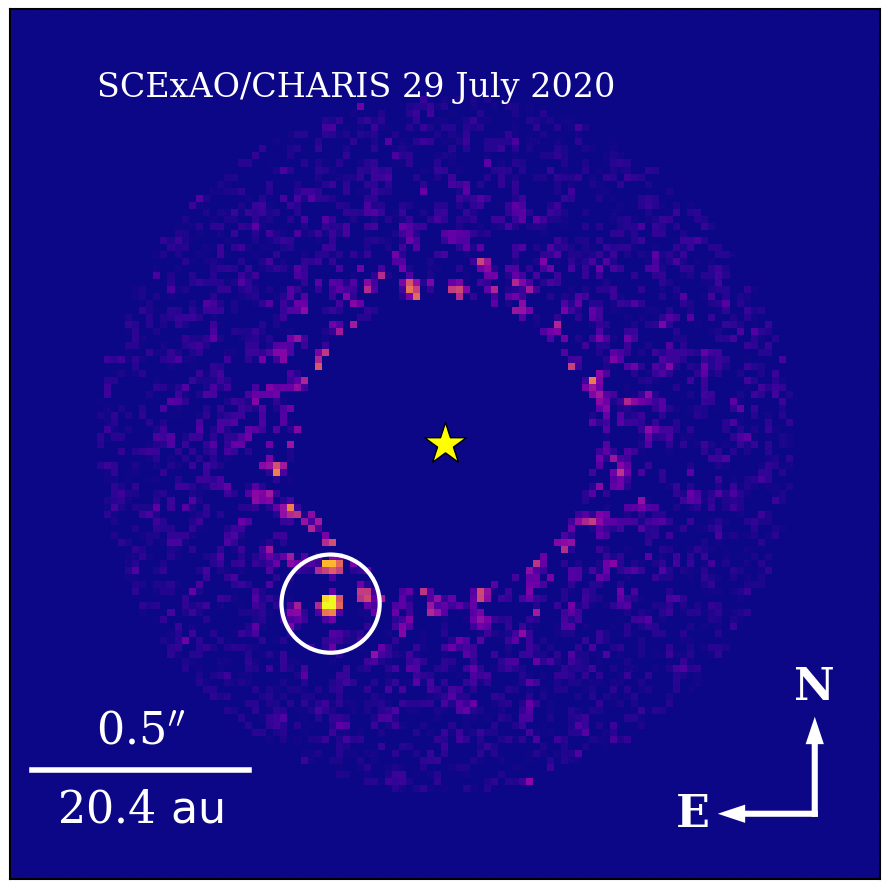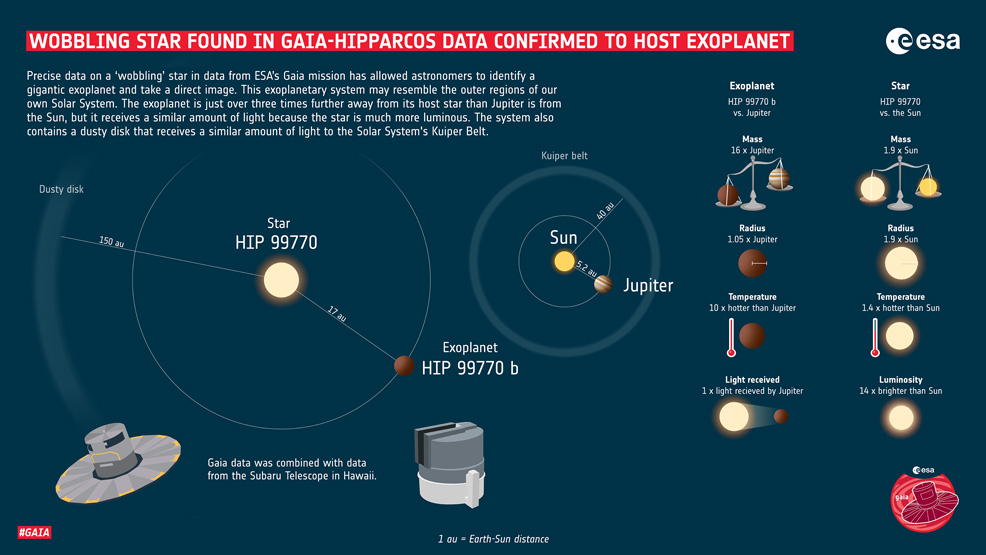
19th April 2023 New exoplanet seen via direct imaging The discovery of HIP 99770 b, a new exoplanet located 133 light years away, is reported in the journal Science. A team of astronomers used a new detection method that combines direct imaging with astrometry.
As of today, there are 5,363 confirmed exoplanets in 3,960 planetary systems. However, only a handful have been seen via direct imaging. Exoplanets are extremely faint compared with their parent stars, making it difficult to spot them in visible light. A gas giant called HIP 99770 b is the latest of these very few exoplanets confirmed via direct imaging. It has also become the first jointly discovered from both direct imaging and precision astrometry, a new indirect method that identifies a planet by measuring the position of the star it orbits. Combining these direct and indirect methods can provide a more complete understanding of an exoplanet's characteristics, according to the authors of a study that appears this month in the journal Science. "Indirect planet detection methods are responsible for most exoplanet discoveries thus far. Using one of these methods – precision astrometry – told us where to look to try to image planets. And, as we found out, we can now see planets a lot easier," said Thayne Currie, Associate Professor of Astrophysics at the University of Texas at San Antonio. HIP 99770 b is almost identical in size to Jupiter, but has 16.1 times its mass. It orbits a dusty A-type star (29 Cygni) with 1.9 solar masses. The planet is located at 17 astronomical units (AU) from its parent star – about three times further out than Jupiter is from our Sun, and similar to the orbit of Uranus. However, because 29 Cygni is very bright, the light it receives is about the same as that falling on Jupiter. Another similarity with our own Solar System is a surrounding ring of icy debris left over from planet formation, like the Kuiper belt observed beyond Neptune.
Currie and his team used the Hipparcos-Gaia Catalogue of Accelerations to make their discovery of HIP 99770 b. This catalogue consists of data from ESA's 2013 Gaia mission and Hipparcos, Gaia's predecessor, providing a 25-year record of accurate star positions and motions. It revealed that the star 29 Cygni is likely being accelerated by the gravitational pull of an unseen planet. The astronomers then used the Subaru Coronagraphic Extreme Adaptive Optics (SCExAO) instrument, which is permanently installed at the focus of the Subaru Telescope in Hawaii, to image and confirm the existence of HIP 99770 b. This discovery is significant, Currie said, because it opens a new avenue for scientists to discover and characterise exoplanets more comprehensively than ever before, shedding light on the diversity and evolution of planetary systems. Using indirect methods to guide efforts to image planets could one day lead to the first direct images of other Earths. "This is the first of many discoveries that we expect to have," added Currie. "We are in a new era of studying extrasolar planets. HIP 99770 b is a proof of concept of this new strategy for finding imageable planets that will get far better in the next five years." He and his colleagues are now analysing data from around 50 other stars. The Gaia mission's fourth data release (DR4), expected later this decade, will be based on 5.5 years of orbital movements (nearly double the baseline for DR3) and will make it much easier to spot which stars are wobbling, says Currie. "The indirect detection method will point us to a star around which a rocky, terrestrial planet could be imaged," said Motohide Tamura, study co-author and Professor of Astronomy at the University of Tokyo. "Once we know when to look, we hope to learn whether this planet has an atmosphere compatible with life as we know it on Earth."
Comments »
If you enjoyed this article, please consider sharing it:
|








